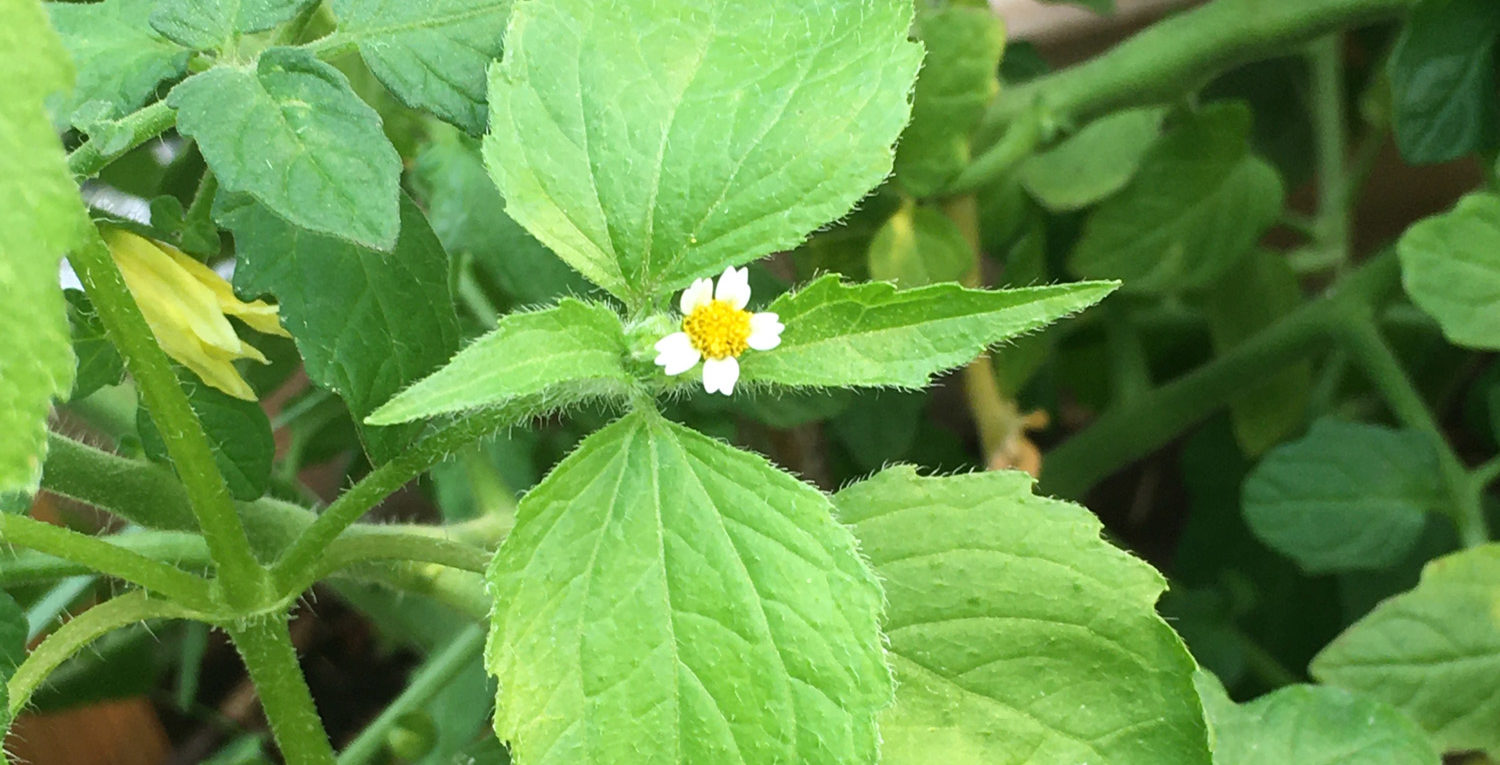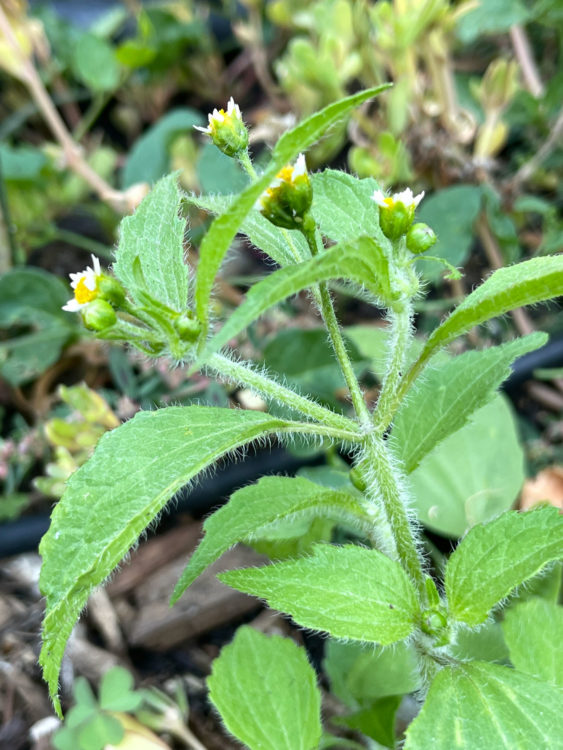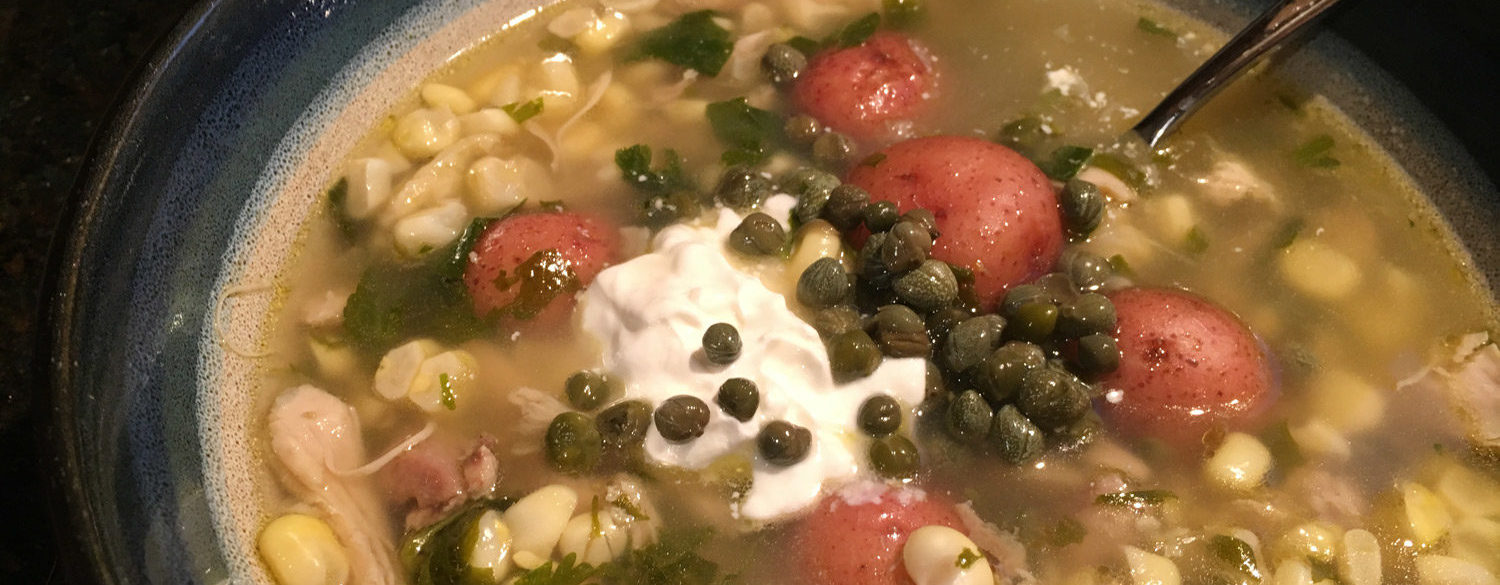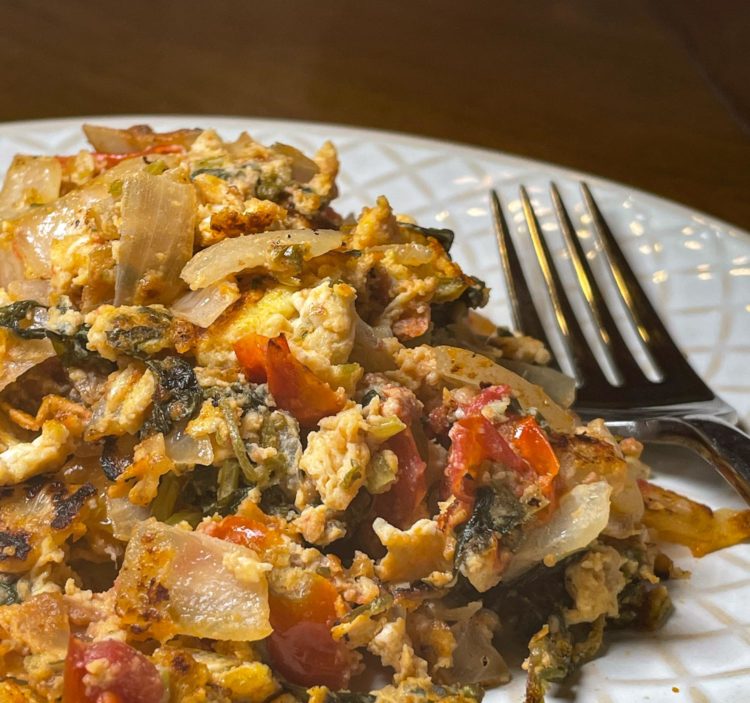
As the season for abundant leafy greens wanes, I find myself more and more obsessed, tiptoeing daily around my yard and garden to fill my bowl. I steam greens and eat them with eggs for breakfast, fold them in great quantities into omelets, whiz them into pestos and green smoothies, and force feed them to my better half.
 Because of this I am all the more grateful for quickweed, also known as gallant soldier (Galinsoga spp.)—an unassuming garden weed that becomes very easy to identify once it produces its tiny flowerheads, which have centers of yellow disk flowers surrounded by widely spaced, 3-lobed petals or ray flowers. Often hairy, the quickweeds have opposite, elliptic leaves, their margins ranging from entire to toothed.
Because of this I am all the more grateful for quickweed, also known as gallant soldier (Galinsoga spp.)—an unassuming garden weed that becomes very easy to identify once it produces its tiny flowerheads, which have centers of yellow disk flowers surrounded by widely spaced, 3-lobed petals or ray flowers. Often hairy, the quickweeds have opposite, elliptic leaves, their margins ranging from entire to toothed.
Two species are common in North America, the hairy “shaggy soldier” Galinsoga quadriradiata, and the less-hairy G. parviflora. Both are edible. My few greenhouse plants, and the greens I gather in greater quantities from my father-in-law’s Denver garden, appear to be G. quadriradiata, which is not surprising as this is the more common species.
Ajiaco con guascas
I first became obsessed with quickweed when I learned it is the principal ingredient in the Columbian soup ajiaco. There it is known as guascas and is stewed in a thin broth with corn on the cob, chicken, and potatoes of all shapes, colors and sizes, then plated with capers and sour cream. Having fallen in love with ajiaco, one would be hard-pressed to find the fresh guascas in a US grocery store, and yet here it is, free for the taking in gardens, fields, greenhouses, and yards.

There are plenty of recipes for ajiaco online, and my various renditions have turned out great. Here are a few more things I’ve liked:
Quickweed lemon caper sauce
First was a creamy, herbed caper sauce to serve with salmon, which I was inspired to do because of the capers and cream in ajiaco soup.
To make it I simmered 1/8 cup lemon juice, 1/2 tsp zest, 1 large minced garlic clove, and a splash of water for 2 minutes, then stirred in 1/4 cup fine-chopped quickweed greens, 1/4 cup cashew cream (regular cream should be fine), a splash of olive oil, and salt and pepper, heating for a few minutes more. Afterward I thought it too lemony so I added a pinch of baking soda, which bubbled up and gave it a nice texture.
My better half was over the moon for it, and I liked it too. Next time: more fresh quickweed greens, or the dried herb to concentrate the flavor.


Good in eggs
I also enjoyed quickweed greens simmered with onions and fresh pico de gallo salsa, scrambled into a plate of eggs and served with a dollop of cream on top.
Now, I am ready for smoothies and steamed greens. I am ready for pestos and salads. I should have gathered more. Don’t make the same mistake I did—get a heap of quickweed and eat it up already! I will live vicariously.

Hi just enjoying your article
It’s eye opening to have this plants review
Thank U.I am really interested in wild food & medicinal plants.
Thank you. Very glad to hear about these Quickweed recipes, as our garden has lots of it! I’m looking forward to making ajiaco. Thanks again for telling us about it.
One year I tilled my garden and did not mulch. And this plant kept popping up everywhere and choking out all my greens, beans, onions… just everything.
SonI finally said, “What are you?! … and are you useful?” Looked it up in a weeds of the region book and found out what it was. I’ve been feeding it to my chickens and dried a good gallon of it, and still have more than I know what to do with.
So…. Thank you for some recipes!!
You are most welcome!
Hi, thanks for your blog post. It contained plenty of interesting details. I am looking for more similar posts. All the best Mauri K. Ahlberg, meta-researcher of wild edible plants. ORCID: https://orcid.org/0000-0002-6202-8733